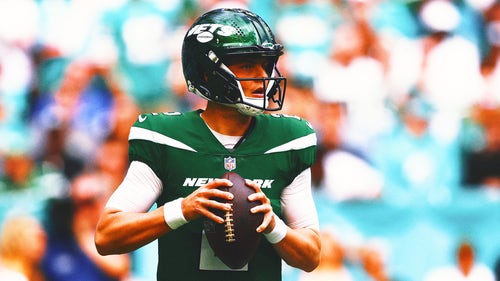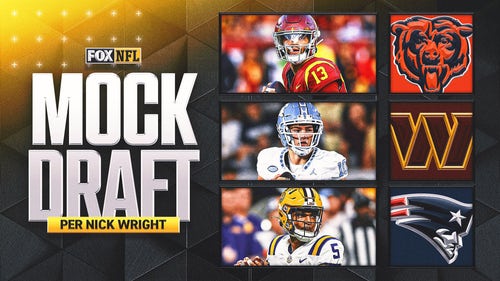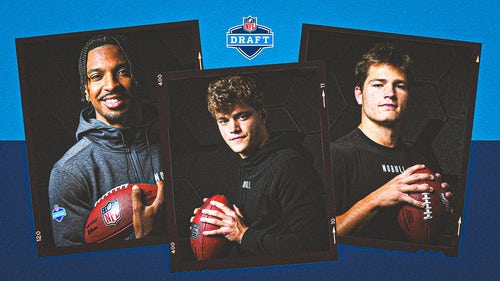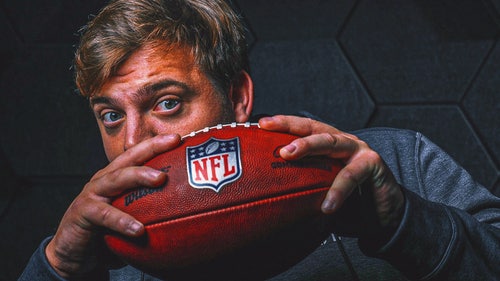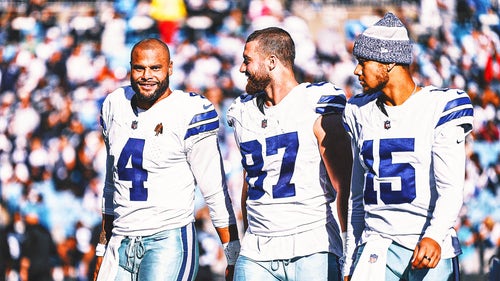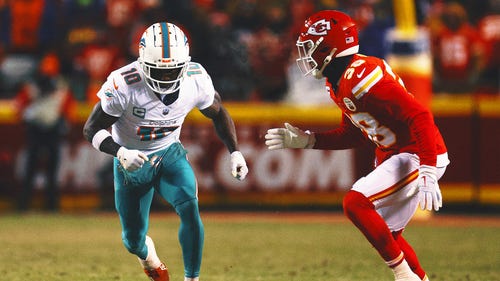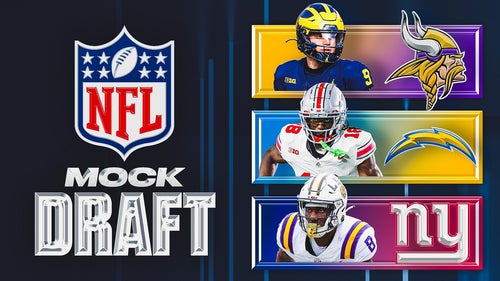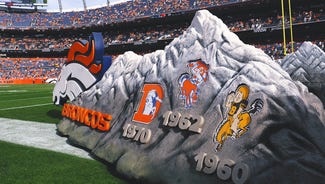
Controversial calls from Week 3
Michael Vick is really good at what he does on a football field.
What he isn’t so good at is being an official.
After suffering a concussion in a Week 2 loss to Atlanta, Vick returned in Week 3 against the New York Giants only to suffer yet another loss — along with a broken right (non-throwing) hand in the fourth quarter.
In his press conference following the 29-16 defeat, Vick said he wasn’t happy with the officiating, citing a hit by the Giants’ Chris Canty, as well as others.
"I felt I got hit late. No flag," Vick said. "At some point something catastrophic is gonna happen. Not to blame the refs, but more precautions should be taken."
Not to blame the refs? Hmmm, that’s not what it sounds like to me. And if that wasn’t enough, there’s more.
"Every time I throw the ball, I'm on the ground," Vick said. "I get hit in the head. I don't know why I don't get the 15-yard flag like everybody else does. I'm not trying to blame the refs. I just want them to take notice."
Doesn’t get the flags like everybody else? That’s bull.
The rules are no different for Michael Vick than they are for anybody else. These complaints are not new. Vick — and the Eagles — have complained ever since he returned to the NFL in 2009.
He is a talented, scrambling quarterback. In fact, there isn’t another quarterback like him. He’s constantly on the move and he is going to end up on the ground sometimes. But just because he’s on the ground, it does not mean he was hit late.
The officials have a tough enough job as it is, being second-guessed all the time. The last thing they need is unwarranted criticism.
Let’s take a look at some of the other interesting plays from Sunday.
THE GAME: San Francisco at Cincinnati
THE SITUATION: San Francisco had the ball, second-and-13 at the 49ers’ 10-yard line with 10:19 left in the second quarter. Cincinnati led 3-0.
THE PLAY: 49ers quarterback Alex Smith took the ball in the shotgun formation and ran the ball to the 49ers’ 15-yard line for five yards and was tackled and hit in the helmet by Cincinnati’s Nate Clements. There was a foul on the play, but not for hitting the quarterback.
MY TAKE: One of the most misunderstood rules in the NFL deals with helmet-to-helmet contact. The main thing to remember is that a runner is not one of the defenseless players.
There are eight defenseless players: passer, receiver of a pass, receiver of a kick, a runner on the ground after a play, a runner whose forward progress has been stopped, a quarterback after a change of possession, a kicker during a kick and a player who is blindside blocked.
Those eight players cannot be hit helmet-to-helmet or in the head or neck area by a helmet, shoulder or forearm.
Any other player, including the runner, can be hit helmet-to-helmet legally, unless it is late and after the whistle has been blown.
THE GAME: New York Giants at Philadelphia
THE SITUATION: The Giants had the ball, second-and-8 at the Philadelphia 28-yard line with 8:07 left in the fourth quarter. Philadelphia led 13-10.
THE PLAY: Giants quarterback Eli Manning completed a 28-yard pass to Victor Cruz that was called a touchdown on the field. The replay assistant challenged the pass completion ruling because as Cruz crossed the goal-line, the ball comes out as he was being pushed to the ground. The ruling was upheld and the Giants were awarded a touchdown.
MY TAKE: Every time you see one of these you think about the process of completing the catch when going to the ground. The ball did come loose, but the difference between this and the Lions’ Calvin Johnson play from last year is that Cruz was not going to the ground to complete the catch.
He clearly got both feet down upright, and then was slung into the end zone by the defender. He, therefore, had become a runner and the ball was dead when he broke the plane and the touchdown was confirmed.
THE GAME: New England at Buffalo
THE SITUATION: Buffalo had the ball, first-and-10 from the New England 39-yard line with 1:43 left in the game. The score was tied at 31.
THE PLAY: Buffalo quarterback Ryan Fitzpatrick completed a 39-yard pass to Fred Jackson that was ruled a touchdown on the field. The replay assistant challenged the runner-broke-the-plane ruling, because it appeared Jackson’s knee hit down before he crossed the goal-line. After a review, the call was reversed and the ball was placed at the New England 1-yard line.
MY TAKE: This reversal was very interesting because it took away a touchdown from Buffalo, but the Bills actually benefited because the call left the ball at the 1-yard line and the Bills were allowed to run the clock down.
Had the ruling of a touchdown stood, New England would have gotten the ball back down by seven with about 1:43 left. And with Tom Brady at quarterback, anything would have been possible. Instead, the Patriots were forced to use all of their timeouts and the Bills ended up kicking the winning field goal on the last play of the game.
During this sequence, Buffalo was called for a false start, which normally carries a 10-second runoff. However, New England had the option to accept the penalty yardage, but declined the runoff since they wanted time left on the clock. It’s not often you see a team that has a touchdown taken away benefit from the ruling.
THE GAME: Green Bay at Chicago
THE SITUATION: Green Bay had the ball, first-and-10 at the Green Bay 40-yard line with 11:56 left in the fourth quarter. Green Bay led 27-10.
THE PLAY: Green Bay’s James Starks carried the ball around left end to Green Bay 35-yard line for a loss of five yards, then fumbled. It was recovered by Chicago’s Julius Peppers at the Green Bay 32. Green Bay challenged the loose ball recovery ruling, and the play was upheld.
MY TAKE: This was a big play, but one that you couldn’t prove either way. The overriding factor was that you never could conclusively prove when Peppers got control of the ball. You had to piece two shots together.
One shot showed Peppers sliding out of bounds and the second shot showed the ball loose and then disappear into his body. If I had to guess, I would say that he was probably out of bounds when he got control. However, the ruling on the field that he recovered inbounds and you can’t change that based on what you think. You can only change it based on what you can prove.
This is another one of those plays that replay would not have changed, no matter which way it was called on the field.
THE GAME: Arizona at Seattle
THE SITUATION: Arizona had the ball, second-and6 at the Arizona 34-yard line with 10:01 left in the first quarter. There was no score.
THE PLAY: Arizona quarterback Kevin Kolb’s pass intended for Andre Roberts was intercepted by Earl Thomas at the Seattle 43-yard line. Seattle was called for two penalties on the return, one for illegal contact and one for unnecessary roughness on Seattle’s Kam Chancellor for a blindside hit to Arizona’s Todd Heap.
MY TAKE: A lot of questions as to why this was a foul. Let’s go back to the discussion about defenseless players. A player cannot be blocked from the side or behind by an opponent who is heading towards his own end line. That is called a blindside block because the player that is blocked never sees it coming. Therefore, that player cannot be hit helmet-to-helmet, nor can he be hit in the head or neck area with the helmet, shoulder or forearm.
Chancellor launched into this high hit, and the foul that was called was exactly what the ownership wanted when they made this player defenseless. I know people didn’t like this call, but again, the emphasis is on trying to prevent concussions with unnecessary contact to the head or neck area.
You can follow Mike Pereira on Twitter right here.






































































































































